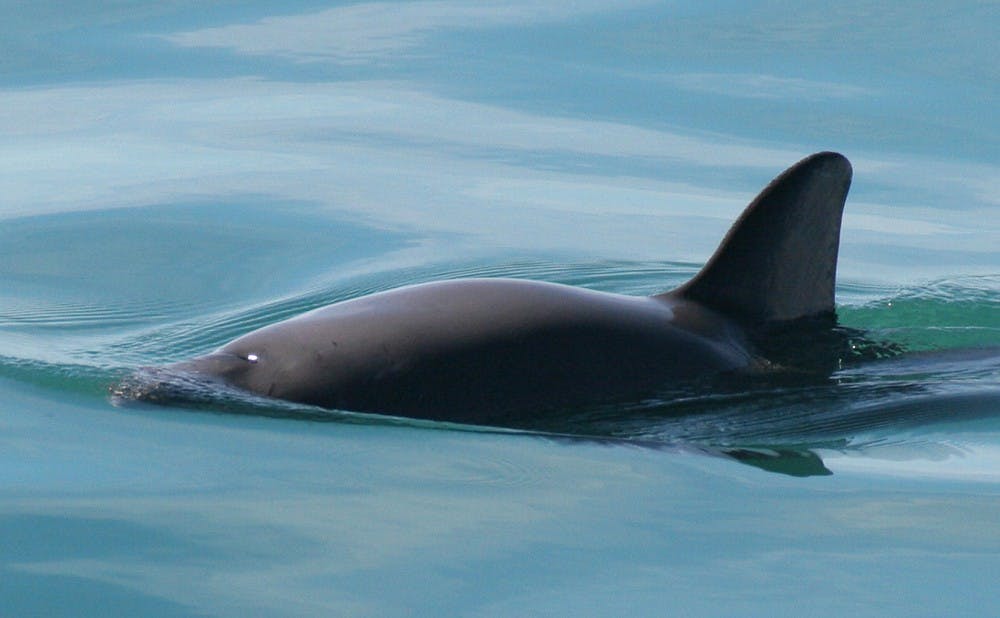This month, Duke University Marine Lab Director Andrew Read—with an international team of over 60 specialists—embarked on what may be the last battle for the most endangered marine mammal on earth.
Backed by a $5 million budget, almost universal public support and both a fleet of Mexican vessels and a pod of trained U.S. Navy dolphins, Read’s fight to save the vaquita—a shy, 1.5 meter-long porpoise found in the Bay of California—has elicited a positive response among environmentalists. After two decades of failed conservation efforts, however, the Mexican government's effort to capture and raise the last of the vaquitas in captivity is becoming more urgent as the species' population dwindles.
“It is really going to be the very last opportunity to save the species,” Read—who is also the Stephen A. Toth professor of marine biology—said. “Nobody has ever been successful in catching a vaquita before. Nobody has ever cared for a vaquita before.”
The survival of this species, however, depends on Read’s team doing just that. Fewer than 30 vaquitas remain today, and recently, each passing year has seen population decreases of about 50 percent. If this crew fails to capture at least a handful of the animals before time is up, Read said the future of the vaquita will be cast in serious doubt.
More than two weeks have passed since the start of this mission. Read will only stay for one more. In the time that has passed, the team has netted only one of the porpoises—a juvenile, unfortunately, which they were forced to release for health concerns.
Just how are these creatures so successful in evading capture? Read looked out across the bay as he answered—Mexican Navy vessels bobbing in the water, fresh off last week’s capture of an illegal smuggling boat.
“The animals are killed in nets that are set illegally by poachers for a large sea bass,” he said. “The nets that are set to catch these big, enormous sea basses are also very good at porpoises, to the point of their being driven inexorably towards extinction as a result of collateral damage.”
This “collateral damage” has forced the remaining vaquitas to become adept at avoiding nets of all kinds—including those Read’s team relies on for their capture.
Weather around the Bay of California is often highly volatile, which further complicates the team's efforts. Read noted that his team has seen only three or four days of good weather since they first started, leaving them grounded onshore or incapable of tracking their elusive quarry. Read said that on every good weather day the team has been out they have seen vaquitas but that it is easy to lose track of them if the marine weather conditions are not perfect.
Despite the challenges, Read noted that he remains grateful for the quality of his team and the support the Mexican government has shown them.
“The government of Mexico has brought together the very best people in the world,” he said. “At the very highest level of the government, the [Mexican] president and the secretary of the environment made a commitment that they won’t let the vaquita go extinct.”
Federal backing has been a key component of the team's work thus far. The Mexican Secretariat of Environment and Natural Resources has funded $3 million of the crew’s budget, and vaquita-holding pens are already manned with a host of veterinary technicians just waiting for the first porpoises to be brought in.
Mexico is going for the long game in this effort, too. Read anticipates at least a decade before the government will be able to bring poachers in the Gulf of California to heel. Smuggled sea bass presents a lucrative trade right now, he noted, and until that market dries up, wild vaquitas will remain at threat of extinction.
Just how damaging would that loss be? Read explained that the vaquita has played a critical role in Mexican marine conversation movements. Commonly called the “marine panda,” this animal has provided a rallying point for a number of conservationist efforts.
“The vaquita really serves as an icon,” Read said. “If you ask the average person in Mexico City, they’ll know about it, they’ll know it’s endangered. It’s a species people really care about because they’re attractive. They’re cute!”
The vaquita has also brought in outreach, reporters and now even an international film team bankrolled by Leonardo DiCaprio, he noted.
But all that is in flux right now. Read explained that his team hopes to capture five or six of these animals on this mission, and it is possible they might come back for another try in the spring. If all goes well, he added, there is a good chance at eventually recovering this species—success stories for similar animals are not unheard-of.
“Everything is contingent on how things go now,” Read said.
Get The Chronicle straight to your inbox
Signup for our weekly newsletter. Cancel at any time.

